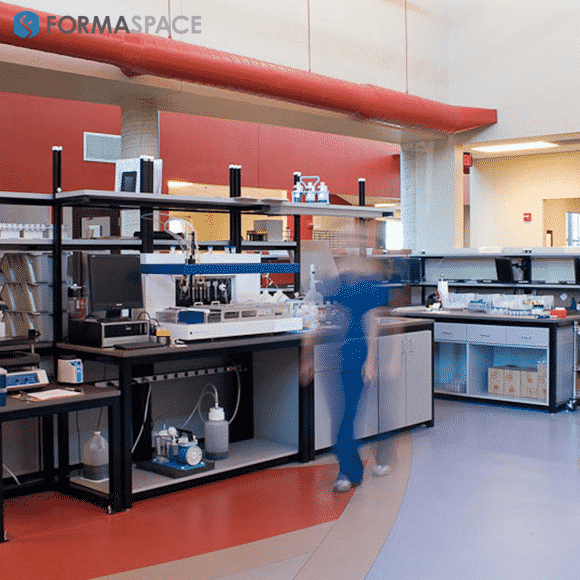Cancer Rates among Younger People are on the Rise Across the World

While overall US cancer rates have been dropping, oncologists are concerned that the incidence of ten of the most common cancers is rising again, especially among younger adults.
Cancers of the breast, pancreas, and uterine areas increased by up to 1% annually between 2015 and 2019. Prostate, liver (in females), kidney, melanoma, and oral cancers (human papillomavirus) jumped between 2 and 3% annually over the same period.
Worryingly, the demographics of who is getting a cancer diagnosis is also changing – cancer is now affecting younger people in increasing numbers.
Among women aged 24-30, the number of cervical cancers increased by 1-2% annually between 2015 and 2019. Colorectal cancers among men and women under 55 also rose 1-2% in the same period.
As a result, colorectal cancer among people under 50 is now the leading cause of cancer deaths among men and second in women – a significant rise from the 1990s when it was the fourth leading cause of cancer death.
Unfortunately, these rising rates of cancer among younger people are not limited to the USA – many other countries around the world have seen similar increases in these early-onset cancers.

Are there Environmental Causes for the Rise in Cancer Diagnoses Among Younger Adults?
Cancer researchers have been scrambling to identify an explanation for the increase in early-onset cancers among younger adults.
Given that colorectal cancer rates among young adults have nearly doubled since 1995, researchers are asking if some kind of environmental exposure has increased during this time.
There are many suspects but few concrete answers.
For example, there are concerns over increased air pollution, newer pesticide formulations, the release of hormonal chemicals into the waterways, and PFAS “forever chemicals” found in water supplies.
Given that people are spending more time indoors these days, indoor air pollution is also a greater concern, with household cleaners and flame-retardant chemicals used in clothing, bedding, and furniture coming under increased scrutiny.
Many researchers are looking at the impact of microplastics, which have proliferated in the environment since the 1990s. One recent paper from researchers in New Zealand, titled “Could Microplastics Be a Driver for Early Onset Colorectal Cancer?” notes that people born after 1960 have had more increased exposure to microplastics at an earlier age than older generations. They speculate that microplastics could disrupt the mucus layer of the colon, disrupting its protective effect and possibly leading to colorectal cancer.
However, tying cancer to environmental exposure has proven to be a difficult endeavor because many researchers have come to believe a cancer diagnosis often comes down to multiple factors working in combination, such as exposure to carcinogens and an unlucky inherited gene expression.

Lifestyle Changes such as Diets High in Processed Foods, Increased Alcohol Consumption, and Reduced Physical Activity Could Contribute to Rising Cancer Rates
What about lifestyle changes since the 1990s?
Unfortunately, many more younger adults suffer from obesity compared to their parent’s generation, and obesity in your twenties and thirties is associated with a doubling of the risk of early-onset colorectal cancer.
Other factors that could be contributing to this obesity (and cancer risk) are changing diets, especially those that are high in processed food (which can alter the gut biome), soft drinks that are high in sugar or artificial sweeteners, as well as a higher incidence of binge drinking, a rising problem among adults under thirty.
Many younger people also have a more sedentary lifestyle compared to older generations, and research points to a correlation between lower levels of physical activity and early-onset colorectal cancer diagnoses.

Are the Cells of Young People Aging Prematurely? Could this be a Factor in Rising Cancer Rates?
A new observation that is gaining attention among cancer researchers is the observation that, as a group, cells in younger people are aging prematurely.
Given that cancer has been described as an ‘aging’ disease, this is a worrisome development.
According to senior author Yin Cao, they found increased signs of biological aging among nearly 150,000 young adults between 37 and 54. The participants were tested for levels across 9 biomarkers, including albumin, alkaline phosphatase, creatine, C-reactive protein, glucose, mean corpuscular volume, red cell distribution width, white blood cell count, and lymphocyte proportion.
In the study, those with the highest levels of biological cell aging had twice the risk of early-onset lung cancer, a 60% higher chance of gastrointestinal tumors, and an 80% greater risk of uterine cancers.
What is the reason for this rapid cell aging?
Researchers are unclear on the specific causes but think many of the risk factors discussed above could be contributing to the problem.

Oncology Researchers are Digging Through Existing Health Data Records to Find Any Cause/Effect Relationships
The search for concrete explanations for the increase in cancer diagnoses among younger people is difficult – it’s hard to establish a true cause-and-effect relationship.
One thing that researchers agree on is that more data is needed, particularly data that tracks the health and cancer incidence of young adult cohorts as they age.
In the meantime, researchers are doing their best to reexamine all the available data from the historical record, including blood samples taken during births going back to the 1960s, to identify and track the cellular changes taking place in younger adults as they age.

Formaspace is Your Laboratory Research Partner
Lab. Education. Industrial. It’s in our DNA.
Talk to your Formaspace Sales Representative or Strategic Dealer Partner today to learn more about how we can work together to make your next construction project or remodel a success.











